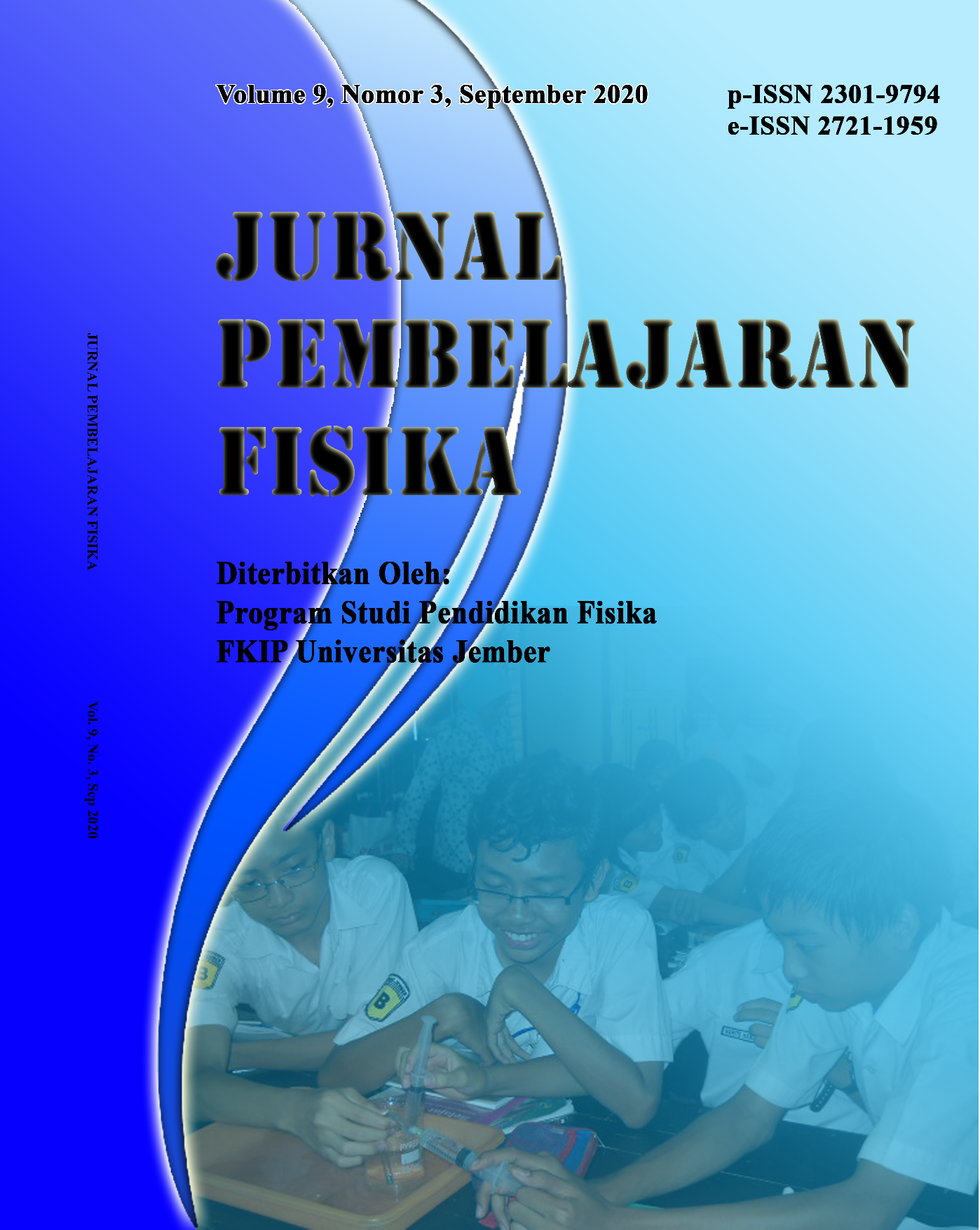INOVASI DALAM PEMBELAJARAN SAINS MASA DEPAN MELALUI STEM (SCIENCE, TECHNOLOGI, ENGINEERING, AND MATHEMATIC) EDUCATION DI SMA MUHAMMADIYAH 3 JEMBER
DOI:
https://doi.org/10.19184/jpf.v9i3.17977Abstract
This article discusses how to find out the level of student creativity in
science learning, using the PBL (Problem Based Learning) learning model through
the STEM approach (Science, Technology, Engineering, and Mathematics). The goal
is to use these learning students who have different thought patterns and levels of
creativity can process their thoughts with different outputs on the cognitive domain
of students in learning physics in the material elasticity and hooke law in class XI
Mipa 3 students at Muhammadiyah 3 High School Jember The data obtained in the
form of worksheets (Student Worksheets) and the final product. This type of research
uses true experimental research. The instruments needed in this research are test
sheets. The results of this study are that using the STEM approach can provide
innovative thinking for high school students' creativity in mastering physics learning.


-14(3)_minimalis_pages-to-jpg-0001_(2).jpg)
_(3)2.jpg)






